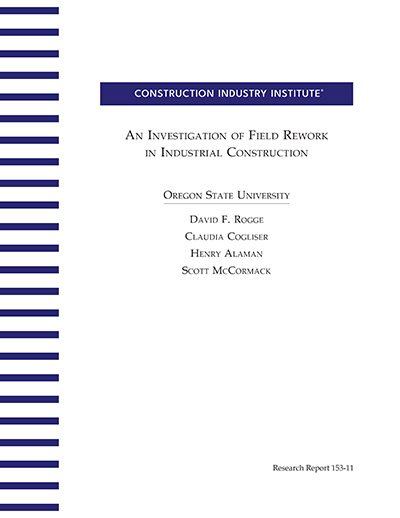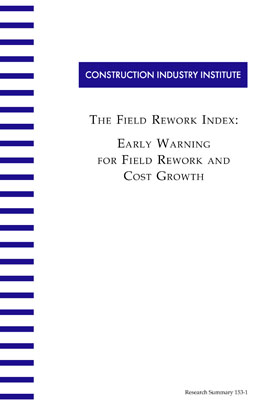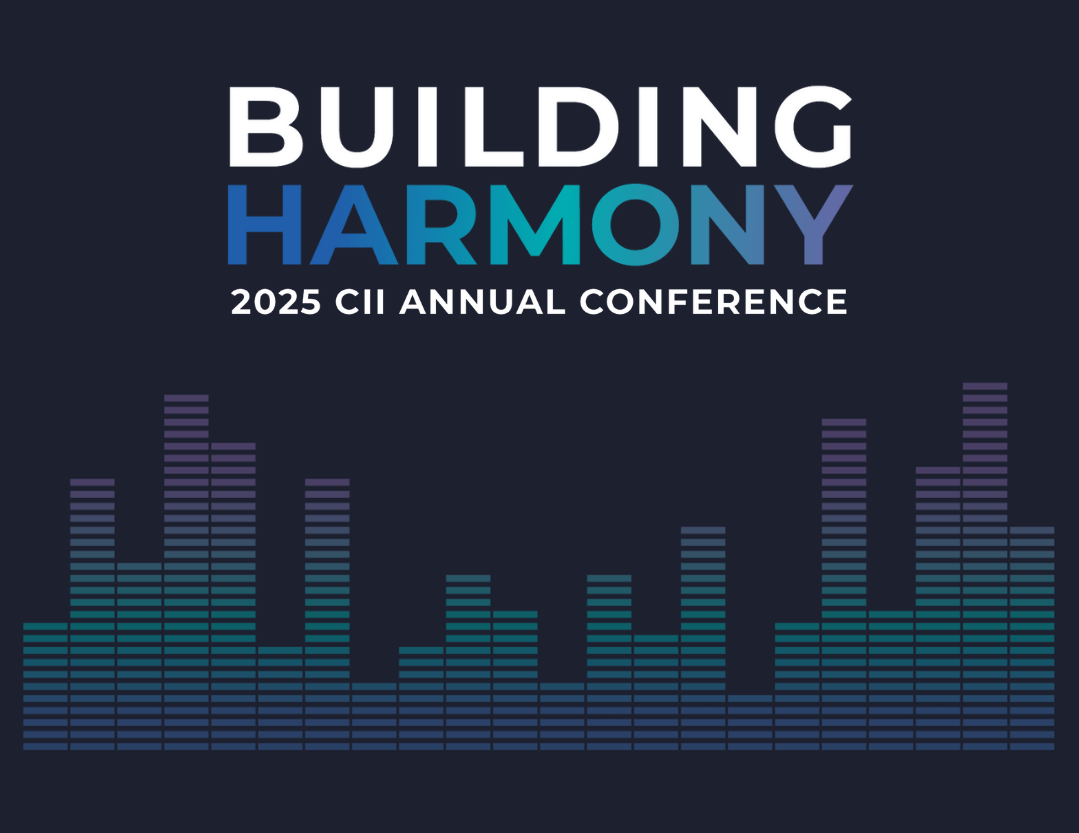
An Investigation of Field Rework in Industrial Construction
“Activities in the field that have to be done more than once in the field, or activities that remove work previously installed as part of the project.” That’s how CII’s Causes and Effects of Field Rework Research Team defined field rework. As such, it is one of the most inefficient activities taking place on a construction site. Someone has to pay to install, remove, and reinstall.
In addition to the obvious cost impact of rework, there is general agreement that high rework increases the difficulty of achieving schedule targets. High levels of rework are likely to result in demotivated craftspersons, further reducing productivity and increasing costs. Quality of the end product may be affected.
The Construction Industry Institute (CII) formed the Causes and Effects of Field Rework Research Team in February 1998 and contracted with Oregon State University to research field rework in the industrial sector of the North American construction industry. The research objectives included investigating field rework measurement, determining major causes of rework, assessing the cost and schedule impact of rework, identifying practices to minimize rework, and developing a tool to provide early warning of high field rework during construction.
Four major data gathering activities were undertaken to accomplish research objectives. After an initial literature review, the research team surveyed CII membership to determine field rework attitudes and practices. A one-day focus group of construction industry managers with extensive experience measuring and managing field rework followed this effort. Site visits with in-depth interviews were made to six companies identified as leaders in managing field rework. A database containing measurements of field rework, independent variables identified as potential predictors of rework, and parametric project data from completed projects was compiled and analyzed. In the end, the database consisted of 144 usable industrial projects.
The most tangible end product of the research is the development of the Field Rework Index (FRI). This is a simple tool intended for use by the project team one or more times during preconstruction phases of the project. It is used to provide early warning of field rework. The tool consists of 14 questions and a warning chart. The FRI can be computed, and its significance assessed in less than five minutes. Serendipitously, the research team discovered that the FRI also provides early warning of impending cost growth. Projects in the research database with FRI scores below 30 not only experienced low or very low rework, but also experienced negative cost growth.
Projects experiencing high levels of field rework can generally trace the causes back to engineering design, scope definition and pre-project planning, and even the alignment within the organization of the Owner for the project. Attempts to minimize field rework must start early in the project life.
Some companies track field rework through the use of CII’s QPMS, introduced in 1989. Others incorporate rework management in their change management systems. Companies that do not track rework may find the flowchart developed by the research team useful for adapting existing change management procedures to include field rework.



